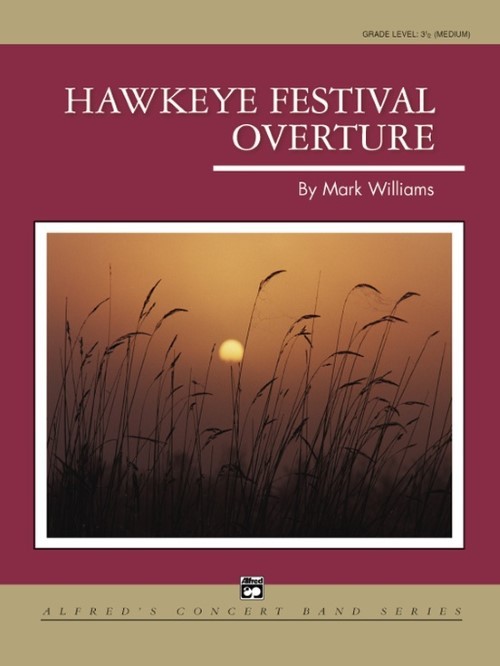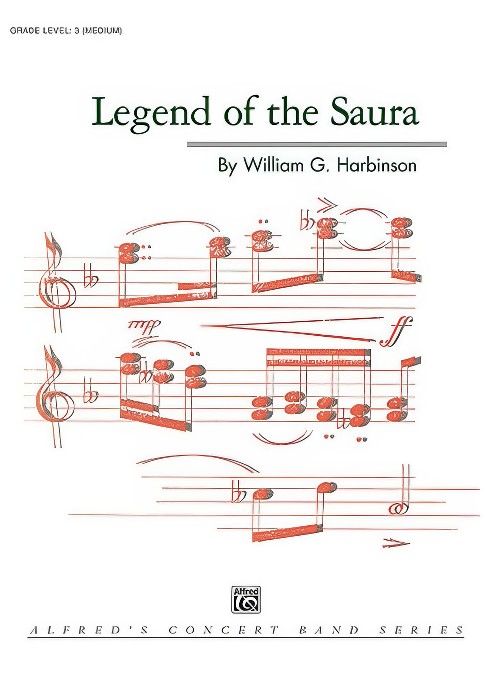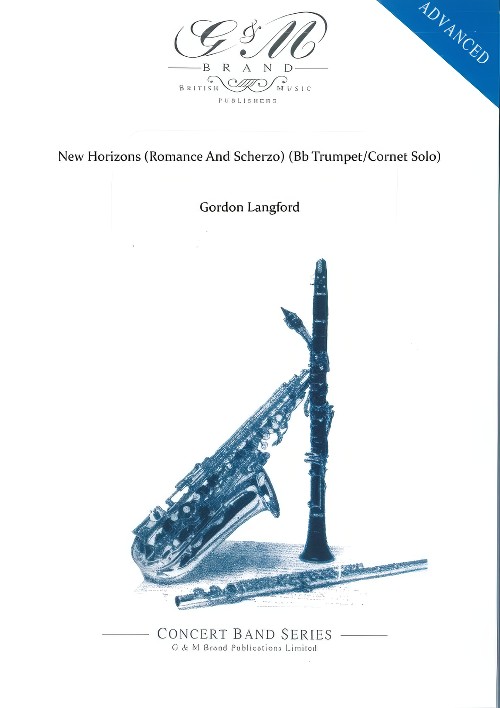Results
-
 £66.95
£66.95Hawkeye Festival Overture (Concert Band - Score and Parts) - Williams, Mark
Hawkeye Festival Overture begins with a bright opening fanfare which leads to a rhythmic Allegro section. An Andante section in 3/4 time features a lyric trumpet solo and numerous harmonic suspensions. A driving percussion interlude in 5/4 with a gradual pyramid that builds in the winds leads to a return of the Allegro. The work ends with a powerful re-statement of the syncopated 5/4 motives and finishes with a flourish. This very appealing work is well-suited for developing concert bands and should provide excellent opportunities for studies in general musicianship, intonation and rhythmic precision. Duration: 4.45
Estimated dispatch 7-14 working days
-
 £66.95
£66.95Legend of the Saura (Concert Band - Score and Parts) - Harbinson, William G.
Commissioned by the South Stokes Band Boosters of North Carolina, Legend of the Saura is a tribute to the Saura Indians who lived in what today is Stokes County. The piece opens with a vibrant flourish of woodwinds and percussion that immediately leads into the pensive yet driving main theme. The contrasting middle section pulls back to a reflective and mysterious solo for recorder (or optional flute), accompanied by exotic percussion instruments. Then, the beautiful theme is continued by solo trumpet, making for a truly incredible moment. Duration: 5.00
Estimated dispatch 7-14 working days
-
 £84.95
£84.95New Horizons (Romance And Scherzo) (Bb Trumpet/Cornet Solo) (Concert Band - Score and Parts) - Langford, Gordon
The sub-title 'Romance and Scherzo' - aptly describes this work, a real show-piece for the Trumpet or Cornet. The solo line has everything for the live performance: the quiet, thoughtful beginning uses strong melodic material and leads, after a short bridge and with a flourish to the scherzo.
Estimated dispatch 7-14 working days
-
 £16.95
£16.95New Horizons (Romance And Scherzo) (Bb Trumpet/Cornet Solo) (Concert Band - Score Only) - Langford, Gordon
The sub-title 'Romance and Scherzo' - aptly describes this work, a real show-piece for the Trumpet or Cornet. The solo line has everything for the live performance: the quiet, thoughtful beginning uses strong melodic material and leads, after a short bridge and with a flourish to the scherzo.
Estimated dispatch 7-14 working days
-
 £73.00
£73.00Legacy of Honor
This piece drives from the start with bold trumpet flourishes and interjections from the rest of the band. After the exciting first section, a lyrical second theme departs to something beautiful and lush in harmonic structure. The development section is based on the opening theme, eventually leading the piece back, followed by a dynamic brass flourish in the coda. A solid choice by a known composer for contests and festivals.
Estimated dispatch 12-14 working days
-
 £91.99
£91.99March Prelude: Alnwick Town - Philip Sparke
March Prelude: Alnwick Town was commissioned by the Alnwick Playhouse Concert Band (with Ray Thompson as conductor) to celebrate their first 25 years. It opens majestically with answering phrases between various sections of the band, leading to a faster march-like section its main theme echoes the rhythms of the opening material. A bridge passage featuring snippets for saxophones and trumpets leads to a new theme, more legato in nature and repeated after a change of key. The bridge passage returns to herald a restatement of the main theme before the opening material reappears to close the work with a flourish.
Estimated dispatch 7-14 working days
-
 £58.50
£58.50To Forge the New Frontier - Ralph Ford
The original overture starts with a flourish and spirals to a soaring melody that is staged atop a driving rhythm. The introductory material is revisited twice, each time with an interesting variation. Solidly scored by this contemporary composer, "To Forge the New Frontier" is perfect for a contest program or a spring concert. (3:00)
Estimated dispatch 7-14 working days
-
 £62.95
£62.95Parade of the Wooden Soldiers
The parade begins with the percussion section at a distance while the flutes introduce the traditional theme. The wonderfully innovative countermelodies interwoven with the conventional theme are certain to have your listeners on the edge of their seats. With a grand flourish, the parade ends while boosting holiday spirits for all. Choose this sparkling interpretation of this classic holiday march on your winter concert. (2:00)
Estimated dispatch 7-14 working days
-
 £87.99
£87.99Crown Century - David Shaffer
Opening with a broad flourish from the upper brass and woodwinds, this truly outstanding prelude will make a powerful opener for any concert. Written as a 3-part rondo, the alternating sections are contrasting in both style and orchestration. Not technically difficult.
Estimated dispatch 7-14 working days
-
 £98.99
£98.99Ars Vitae - Larry Clark
Art is Life! This sentiment is abundant in this wonderful new work for concert band by Larry Clark. Full of flourish and thick brass writing harkening back to the days of Alfred Reed, Ars Vitae has everything you could want in a contest and festival work.
Estimated dispatch 7-14 working days
